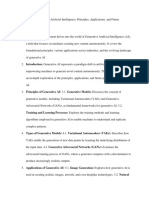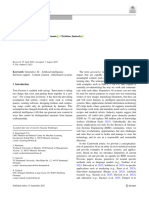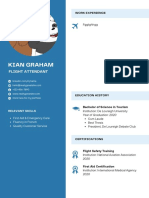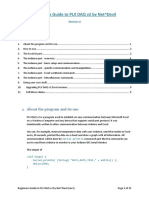0% found this document useful (0 votes)
78 views2 pagesNote On Generative AI
Generative AI is a branch of artificial intelligence that creates new content by learning from existing data, utilizing concepts like machine learning and model training. It encompasses various capabilities including natural language generation, multimedia outputs, and advanced techniques such as text-to-video technology. Tools like Vertex AI and the Palm API facilitate the development of generative applications, making the technology accessible to non-developers.
Uploaded by
israeldinka0Copyright
© © All Rights Reserved
We take content rights seriously. If you suspect this is your content, claim it here.
Available Formats
Download as DOCX, PDF, TXT or read online on Scribd
0% found this document useful (0 votes)
78 views2 pagesNote On Generative AI
Generative AI is a branch of artificial intelligence that creates new content by learning from existing data, utilizing concepts like machine learning and model training. It encompasses various capabilities including natural language generation, multimedia outputs, and advanced techniques such as text-to-video technology. Tools like Vertex AI and the Palm API facilitate the development of generative applications, making the technology accessible to non-developers.
Uploaded by
israeldinka0Copyright
© © All Rights Reserved
We take content rights seriously. If you suspect this is your content, claim it here.
Available Formats
Download as DOCX, PDF, TXT or read online on Scribd
/ 2




















































































